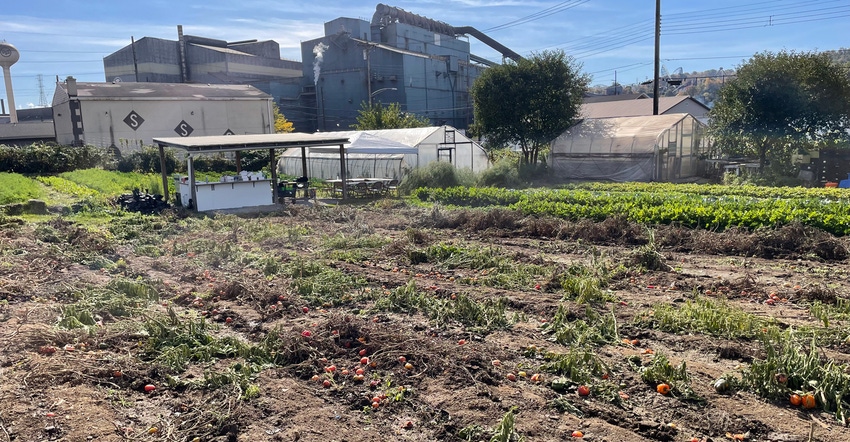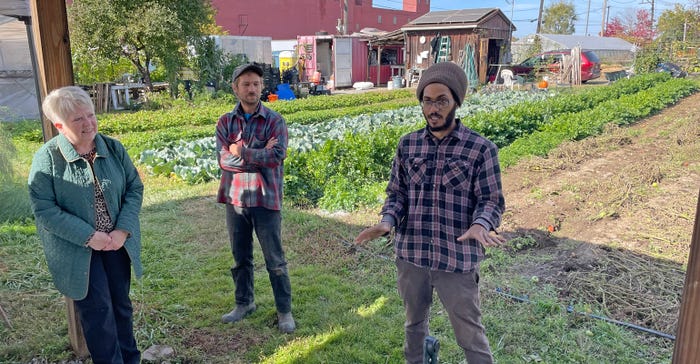November 4, 2022

Being the editor of American Agriculturist is a fun job. It offers me a lot of chances to visit farms and talk to producers about what’s working for them, what’s not working for them and how they are feeling.
But I make time for other things ag-related, too. I’m a board member of Pennsylvania Farm Link, a nonprofit organization that works to “Link Farmers to the Future.” I could spend hours talking about the great work Farm Link does, but one of its main goals, and what it’s probably best known for, is its online land-linking database that links producers who have land with beginning farmers in search of land. If you ever need this service, go to pafarmlink.org.
The organization also puts on workshops and events focused on farmland transition, women in agriculture and other topics. As a journalist, being on this board is rewarding on many levels. For one thing, I get lots of story ideas, which is always good. But I also get opportunities to visit places I normally wouldn’t visit as the editor of this magazine.
For example, I went with the board recently on a visit to Braddock Farms in Braddock, Pa. If the name of the town sounds familiar, it was the place where John Fetterman, current lieutenant governor and 2022 Senate candidate, was once mayor. In fact, according to Nick Lubecki, farm manager, it was Fetterman who asked Grow Pittsburgh, the organization that runs Braddock Farms, to start an urban farm on a piece of property that had become run down with dilapidated houses.

TALKING FARMING: Robert Gray (right) and Nick Lubecki (center) talk about Braddock Farms and its impact on the small town of Braddock, Pa. Darlene Livingston, executive director of Pennsylvania Farm Link, led a tour of the farm by Farm Link board members.

The farm isn’t big; it’s only a couple of acres. But there’s a lot going on. Dozens of crops are grown on the farm, beginning in early spring when transplants are started in the farm’s lone heated greenhouse.
Thrifty farmers
The farm managers make a point of making new uses out of old things. For example, a container that was used to ship things on rail has been transformed into a small office and storage unit. They even use a crockpot filled with water to keep seeds that need a little extra warmth from not dying prematurely.
Everything from lettuce to tomatoes, zucchini and cucumbers are grown in this little oasis. Produce is sold in a small farmstand next to the property’s entrance. Even some of the steelworkers from the still-operating U.S. Steel mill — officially the Edgar Thomson Steel Works — come to buy produce to take home. The steel mill is next to the urban farm with its blast furnace always visible.
Braddock Farms is like a diamond in the rough of a town that once had tens of thousands of people living in it and now only has about 1,000 residents. Downtown Braddock — if you consider it that — is a shell of what it once was. Former shops are boarded up, many homes are empty, and there is a sense driving through the town that its better days are over.
But it was great to see the resiliency of the farmers, many of whom were young, shine through here.
Urban farming is growing. According to a recent report by market researcher Fior Markets, the global urban farming market is expected to grow from $2.77 billion in 2019 to $16.14 billion by 2027. Many new urban farms are being created out of derelict buildings and warehouses that once housed industry but have since closed.
We don’t cover urban agriculture much here, but if we want to spread ag’s message about its ability to feed the world, urban farms are a great place to start.
After all, these are the people who are not only growing food, but also eating it. Let’s embrace our urban farm friends and learn a little from each other.
You May Also Like




